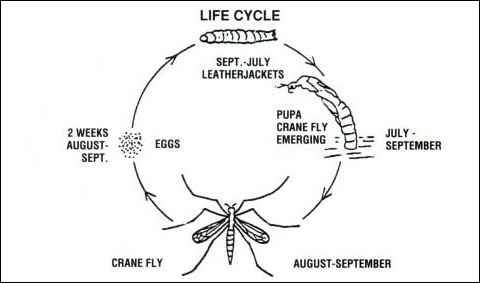
JB Instant Lawn Blog

European Crane Fly - A Lawn Nemesis!!
Feb 3rd, 2023
A quick re-cap and a reminder to keep a close eye on your lawn this Spring for Crane Fly larvae activity and/or damage.
Early Spring is when we often see Crane Fly Larvae damage in Lawns and usually by mid February I can start to expect some calls...
*Now is a good time to be on the lookout for activity.
We are actually pretty lucky here in the PNW when it comes to harmful insects in lawn areas- there are few that require actual treatment.
One exception and a pest that all owners of manicured lawn areas should be aware of is the European Crane Fly.
This insect can and does a considerable amount of damage to lawn areas and requires a pro-active approach when it comes to control.
If you have seen those large mosquito-like insects that flutter about near your outdoor lights- that is what the adult European Crane Fly looks like.
While the adult European Crane Fly is harmless- the larvae can be very destructive. These insects deposit their eggs into the lawn areas in late Summer and early Fall. The eggs will hatch in Fall and the feeding of the larvae begins. *This life cycle image below is a helpful reference.

*(Crane Fly larvae are often called 'Leather Jackets' because of there grey/brown leather-like appearance)
Damage is usually seen first in early Spring- (*February is not uncommon) - this prompts most people to consider some form of insecticide treatment to eradicate the pest. This makes sense- and of course it is the right course of action- sooner the better.
But- Ideally you actually want to treat your lawn for this aggressive insect in mid Fall shortly after they hatch. This approach will insure you kill the larvae at an early stage before they become large enough to do serious damage.
A healthy lawn can actually handle a reasonable population of Crane Fly- so don't be alarmed if you happen to see a few in the lawn/soil. But once the population reaches a certain threshold- 20+ per Square foot for example- some damage can usually be seen. *(lower threshold in a weaker lawn)
Higher populations of Crane Fly larvae can seriously damage and/or even destroy lawn areas. So it is important to be aware and scout for activity.
One sign you can look for between Fall and Spring that might point to a unreasonable population of larvae- would be large groups of birds digging and feeding in your lawn- usually black birds such as Starlings, etc...
*Make sure your Spring lawn is a happy one! Keep this invasive species in check and enjoy a beautiful lawn at the beginning of each new growing season!
